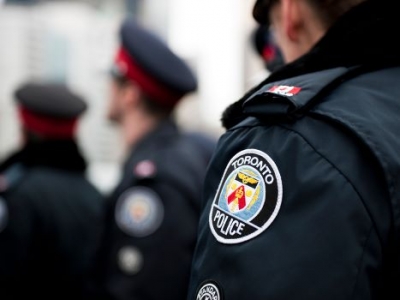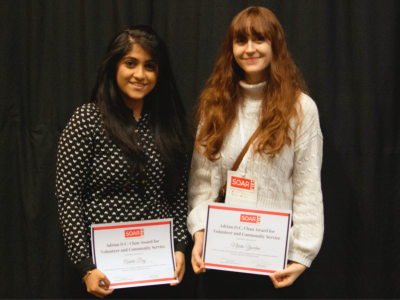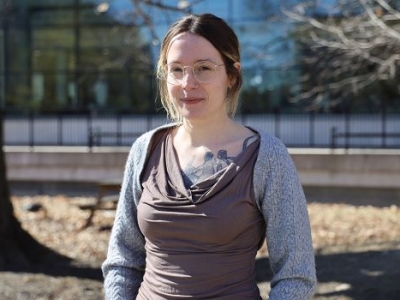–Written by Ty Burke
“Education got us into this mess, and education will get us out”
Chief Commissioner of the Truth and Reconciliation Commission Senator Murray Sinclair summed up the challenge bequeathed to the survivors of Canada’s residential schools with a pithy call to action, and if reconciliation is to be achieved, education can’t be a one-way street.
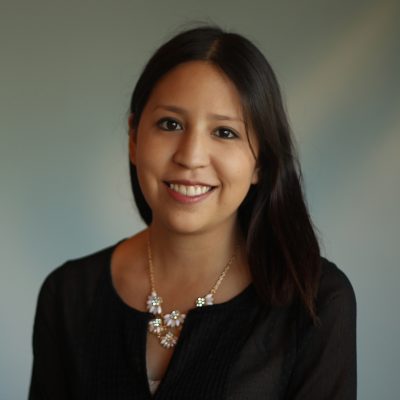 “Empowering Indigenous students and encouraging Indigenous thought in the classroom is incredibly important for reconciliation, and for building a brighter, more inclusive future for Indigenous peoples,” says Liane Chiblow, a Master of Arts Communication student in the School of Journalism and Communication. She also states that Indigenous ways of learning are different and it’s important for Indigenous students to see themselves in education.
“Empowering Indigenous students and encouraging Indigenous thought in the classroom is incredibly important for reconciliation, and for building a brighter, more inclusive future for Indigenous peoples,” says Liane Chiblow, a Master of Arts Communication student in the School of Journalism and Communication. She also states that Indigenous ways of learning are different and it’s important for Indigenous students to see themselves in education.
Chiblow stresses that reconciliation is a two way street: “Education about Indigenous issues for non-Indigenous students is essential in reconciliation, to build awareness and create greater inter-cultural understanding.”
Her research explores traditional oral storytelling as an important part in Indigenous history, culture and ways of life. Through examining creation stories to Anishinaabeg folklore tales, her research aims to explore the multilevel bodies of theory as they relate to communication, decolonization and Indigenous resurgence. She was recently awarded a New Sun Graduate Bursary, a $10,000 annual award for First Nations, Inuit and Métis graduate students who have shown a willingness to use their knowledge to benefit Indigenous communities in fields such as Indigenous governance, public administration, social work, architecture and environmental studies.
“My research looks at the foundations of communications from an Indigenous theoretical perspective, one rooted in Anishinabeg thought,” she says.
“Communication is incredibly important for nation-to-nation relationships and reconciliation, which is why I’m looking at traditional oral stories and the underlying values embedded in them. They’re a starting point when thinking about communication, one that’s rooted in responsibility, reciprocity and love.”
Chiblow explains how these stories are meant for Indigenous survival – “they tell the stories of a community – and contain information, values, and ways of life that are integral to continued Indigenous revitalization. There’s a lot of responsibility when it comes to storytelling, but through analyzing these stories, I’m hoping to open a tiny window of intercultural understanding with settler cultures in Canada. These stories are the foundation of Indigenous cultures and ways of life. So they’re an incredible medium for understanding.”
Bridging Cultures
Chiblow grew up in the city, but calls the small northern Ontario First Nation of Serpent River (Genaabaajiing) home. With just around 400 residents, it’s a small community in between Sudbury and Sault Ste. Marie. She spent childhood summers visiting with her grandparents, and long days at local swimming spots with her cousins. So the community – and the stories told to her by aunties, grandmothers and elders — loom large in Chiblow’s Indigenous perspective.
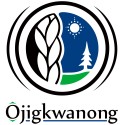 Although Chiblow grew up as urban Indigenous, she gives a lot of credit to the Ojigkwanong Indigenous Student centre for easing the transition to life as a graduate student. The centre is open to the campus community to learn about and practise First Nations, Inuit and Métis cultures, traditions and worldviews, and Chiblow credits the connections she made with other Indigenous students while working and using the centre with making the transition to her studies less overwhelming. It’s been one part of her academic success.
Although Chiblow grew up as urban Indigenous, she gives a lot of credit to the Ojigkwanong Indigenous Student centre for easing the transition to life as a graduate student. The centre is open to the campus community to learn about and practise First Nations, Inuit and Métis cultures, traditions and worldviews, and Chiblow credits the connections she made with other Indigenous students while working and using the centre with making the transition to her studies less overwhelming. It’s been one part of her academic success.
Chiblow also gives credit to her academic supervisor Miranda Brady for her continued success in academics as an Indigenous graduate student. “I’m lucky to have a wonderful advisor,” she says. “Miranda Brady has been amazing, and encourages me to use my Anishinaabe teachings and experiences in my writing. I used to be very timid in writing from the heart, but Miranda has helped me grow, and there’s been such improvement in my work. It really helps to have an advisor who also has a deep understanding of Indigenous issues and whose work also focuses on Indigenous and indigenist research.”
That’s helped foster connections with her classmates. Chiblow calls the amount of support her cohort has shown for one another the most rewarding part of her Master’s experience so far, and she recently shared her preliminary research with the broader group.
“To illustrate some of my findings, I shared a story as a starting point in thinking about the gaps in communication from an indigenous theoretical perspective,” she says. “As I shared this story with non-indigenous students, it opened room for dialogue and understanding in a time when reconciliation and education are at a crucial meeting point.
Monday, February 26, 2018 in Grad Student Research, News
Share: Twitter, Facebook


